Gnanakatha also known as rock cookies or sugar-dipped cookies are a Sri Lankan biscuit variety.
These cookies are made with basic butter cookie ingredients and then coated in sugar before baking them.
Once baked, the cookies have a sugar crust and are crumbly in texture.
Try this gnanakatha recipe if you want to travel down memory lane with a cup of your favourite tea.
Bakery-bought gnanakatha(rock cookies)are usually larger, but I have made them smaller.
If you are having a cup of tea, ditch the sugar and serve yourself one of these cookies.
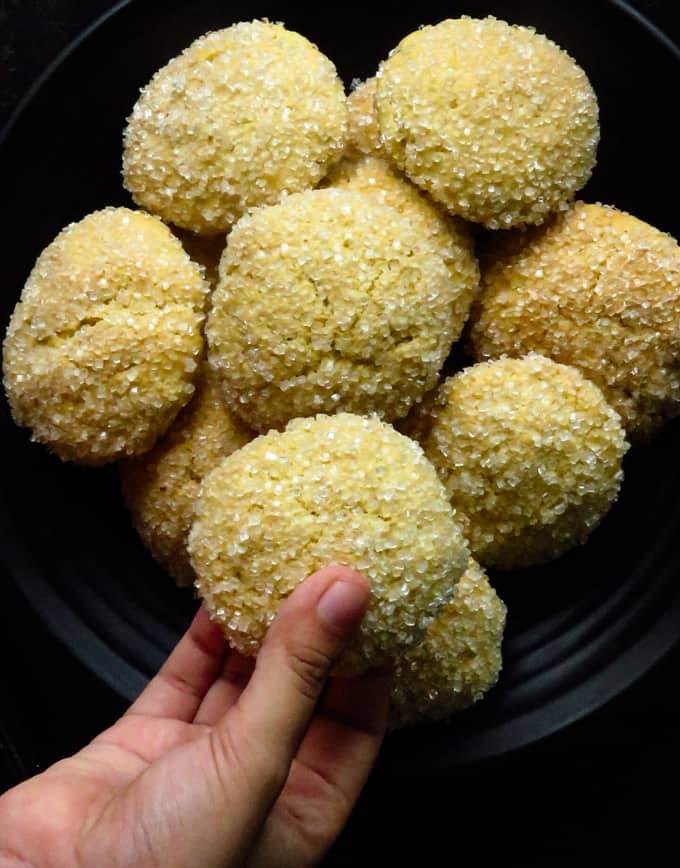
More cookie recipes.
Chunky chocolate drop cookies
Chocolate crinkle cookies.
lemon drop cookies
Indian cookies(nanakhatai).
Sri Lankan kokis(savoury rosette cookies).
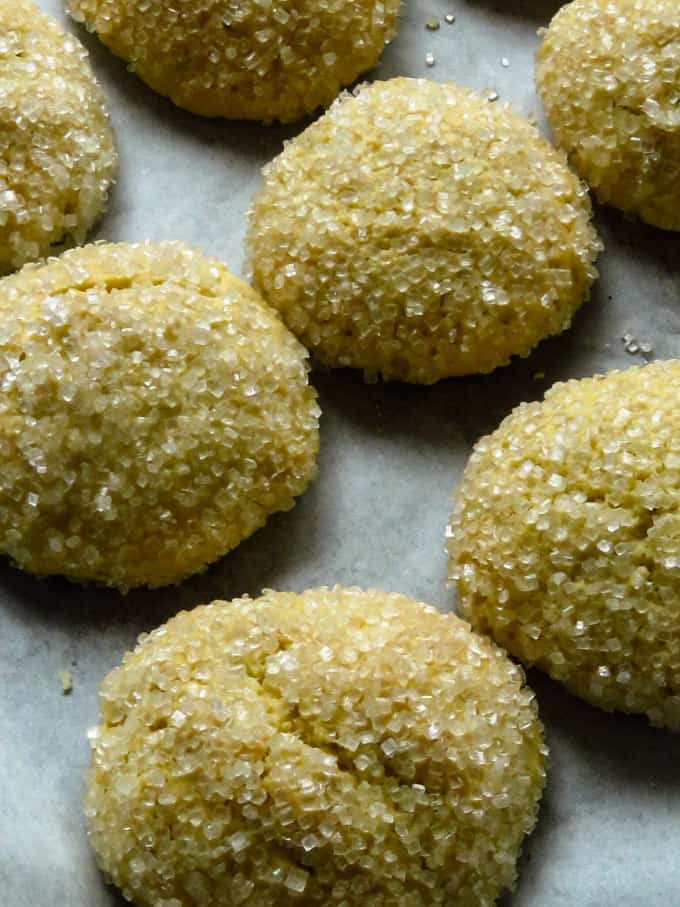
RECIPE DIFFICULTY-EASY
Ingredients to make the gnanakatha recipe.
The ingredients mentioned below use standard measuring cups and spoons.
2 cups of flour
1/4 cup of butter
1/2 a cup of granulated sugar(substitute with icing sugar to combine easily)
3 teaspoons of baking powder
1 large egg
1/2 teaspoon vanilla
1/2 a cup sugar(preferably large grains)
Making gnanakatha(sugar-dipped rock cookies)
All ingredients should be at room temperature.
Place butter in a bowl and run your spatula through the butter to soften it.
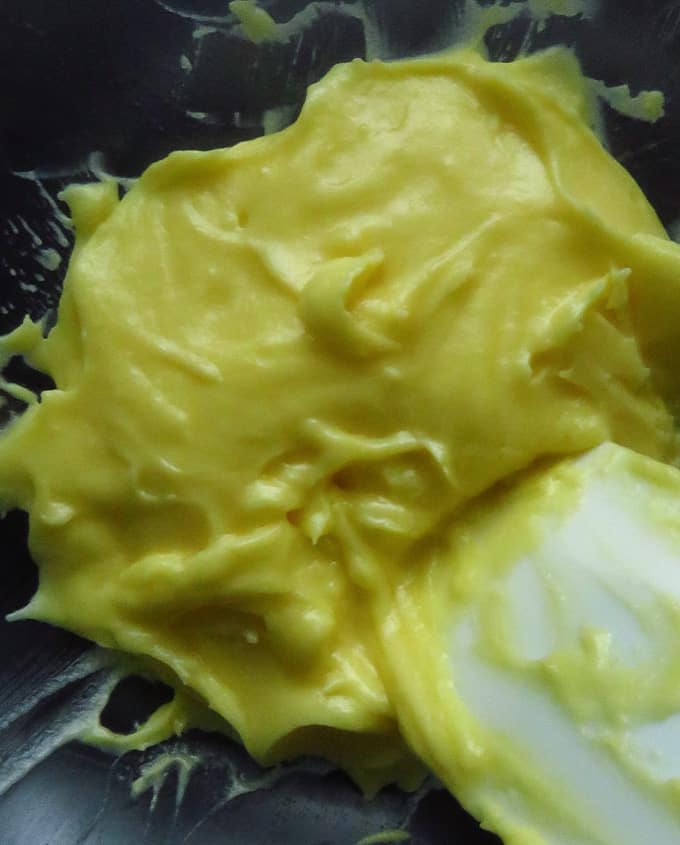
Sift icing sugar onto the butter, breaking any lumps.
Add a whisked egg and vanilla to the mix and combine.
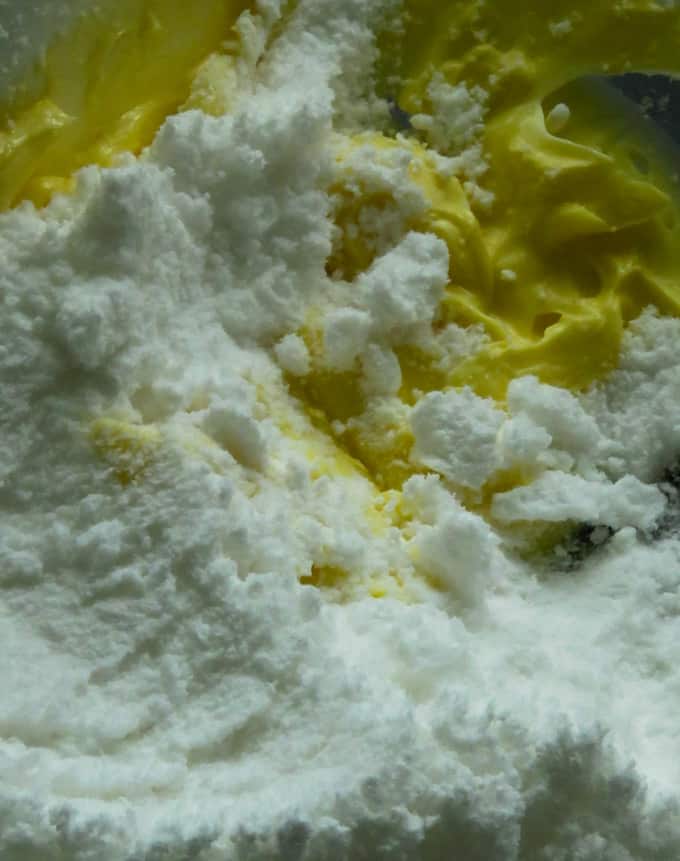
Add flour and baking powder to the flour and sift into the bowl of ingredients.
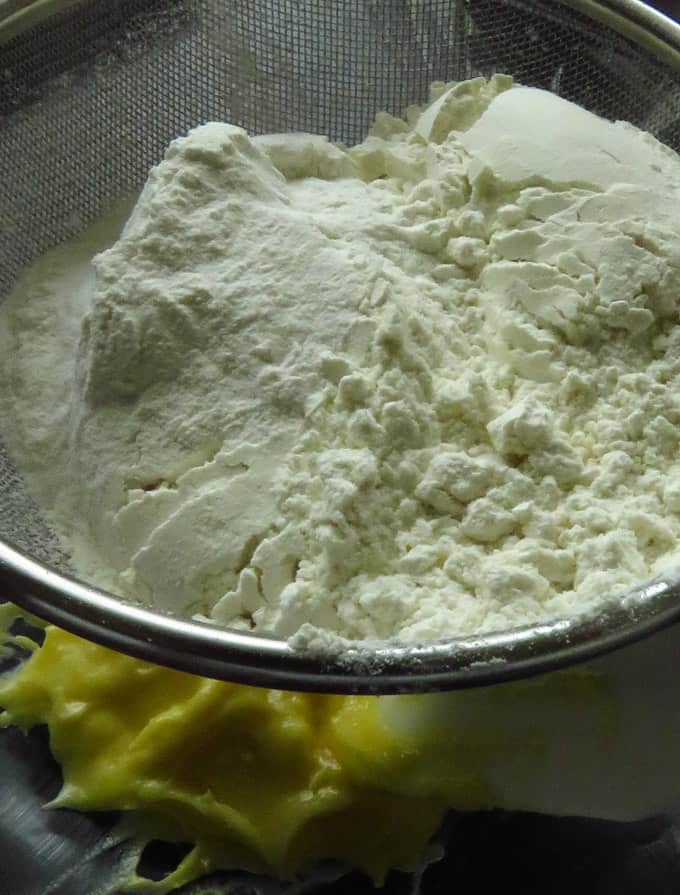
Combine all ingredients to make a rough dough.
Mix to combine, do not knead to make the butter cookie dough.
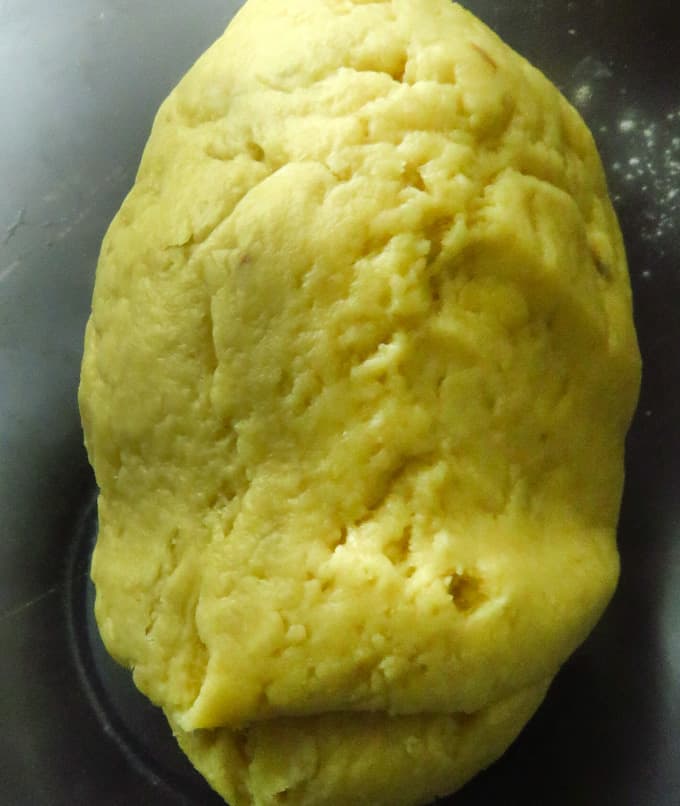
Portion the butter cookie dough into dough balls placing them in a tray covered in baking paper(parchment paper).
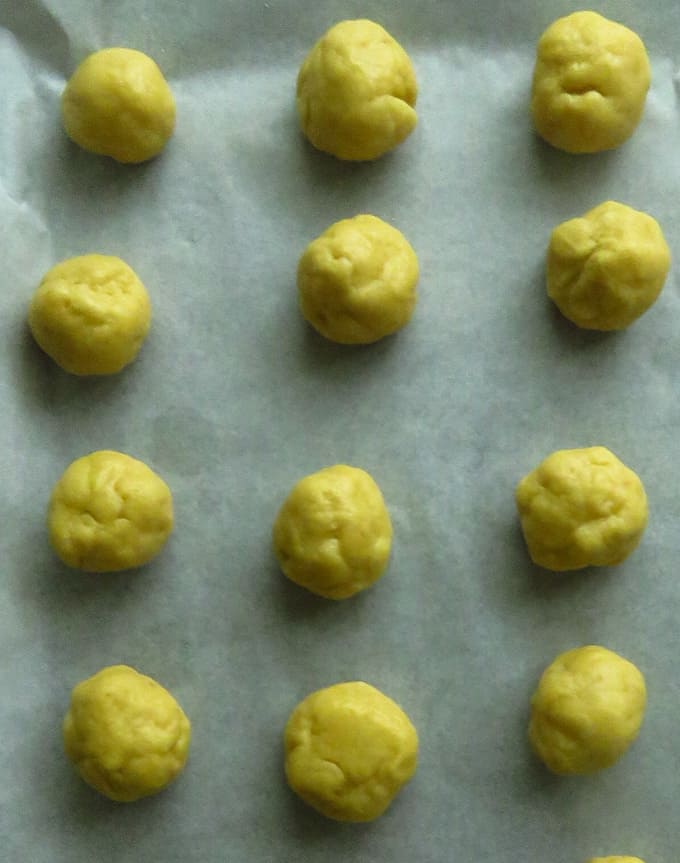
Lightly brush water on all the dough balls.
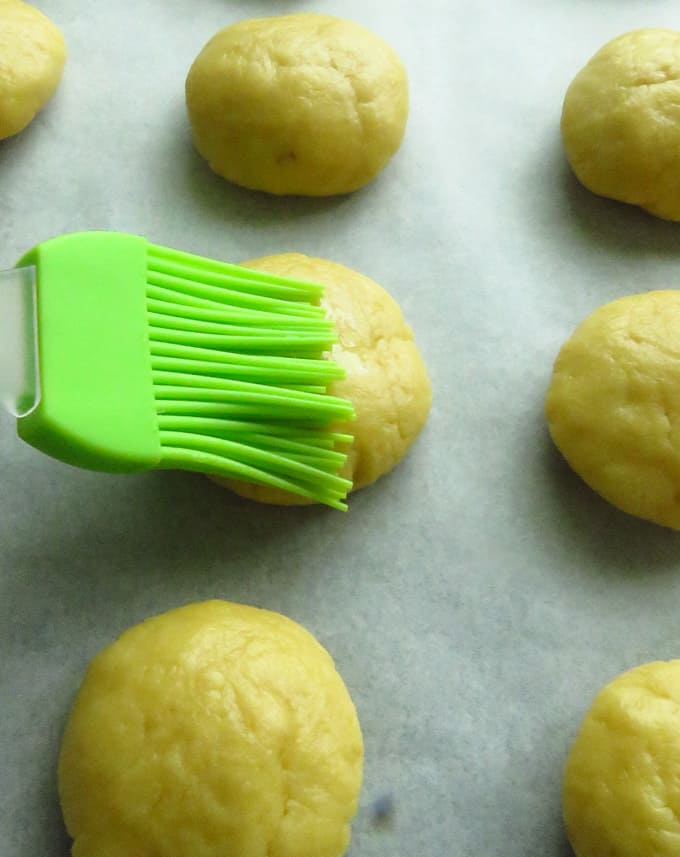
Using your palm lightly flatten the rock cookies to look like discs.
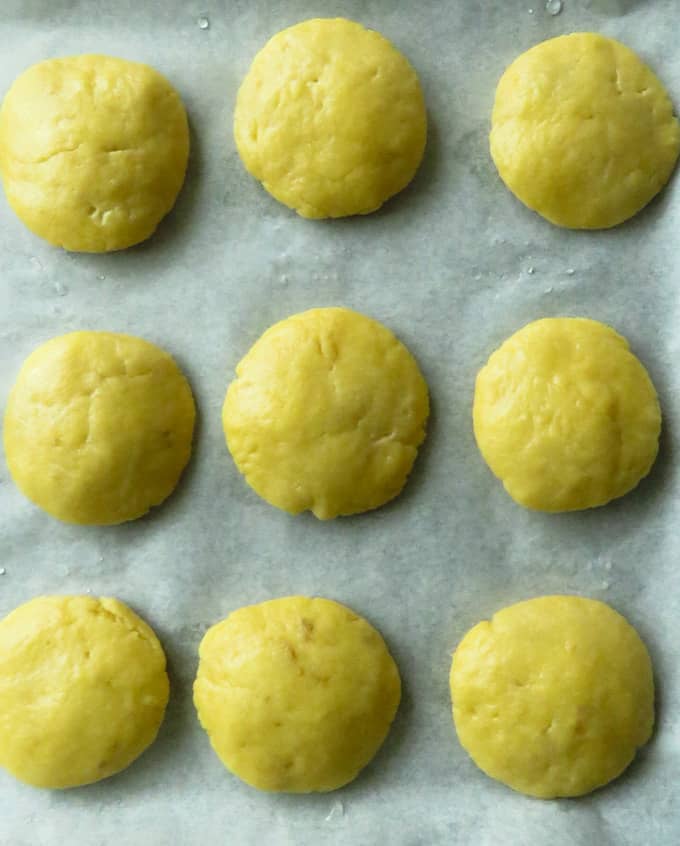
Take each cookie disc(gnanakatha), and place them on the sugar grains.
Gently press down so the sugar grains coat one side.
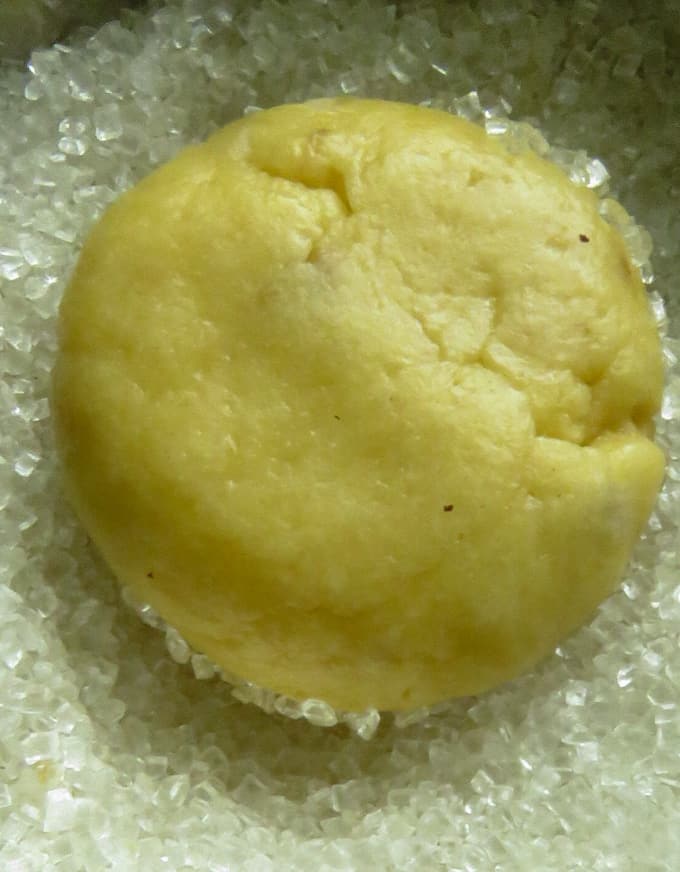
Place them on a baking sheet while preheating the oven to 170C.
Bake at 170C for 16-18 minutes.
For reference purposes, I baked one batch for 16 minutes which gave me soft cookies while 18 minutes gave me slightly harder and darker gnanakatha cookies.
In my opinion, both timings give excellent results depending on what type of texture you want the cookies to be.
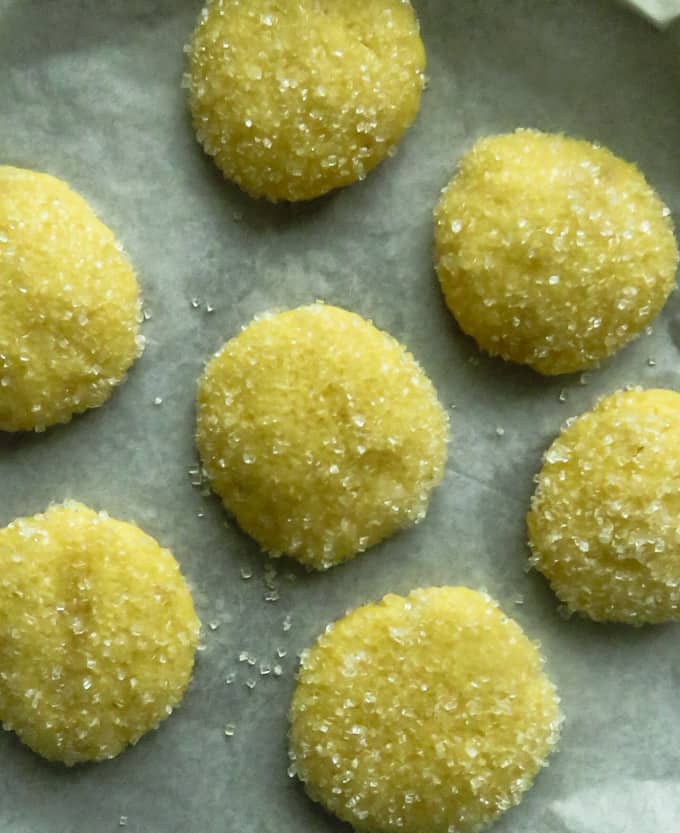
Let the gnanakatha(rock cookies) and enjoy them with your favourite cup of tea.
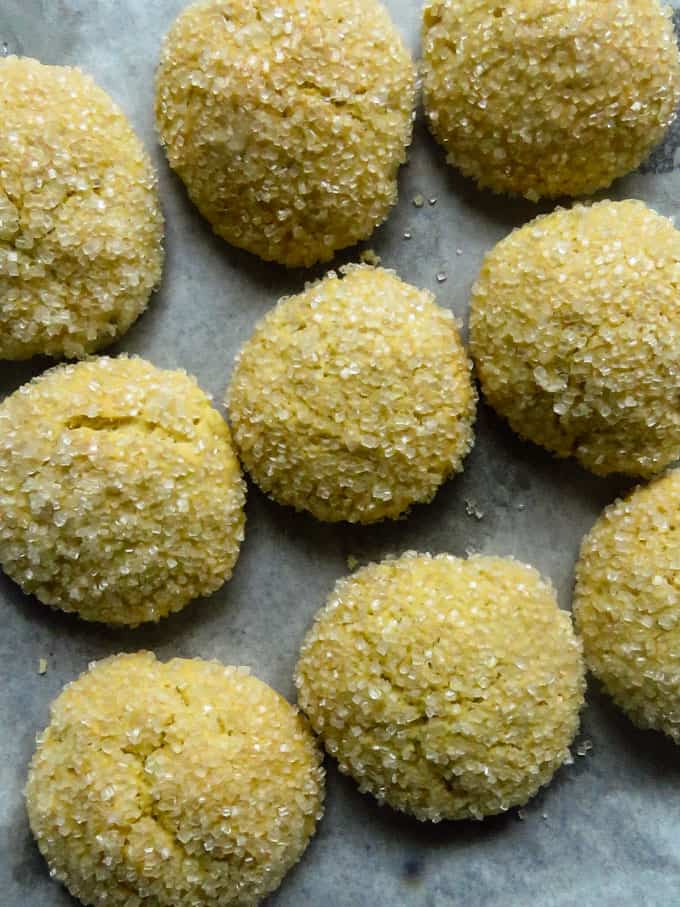
JOIN ME ON ISLANDSMILE YOUTUBE CHANNEL
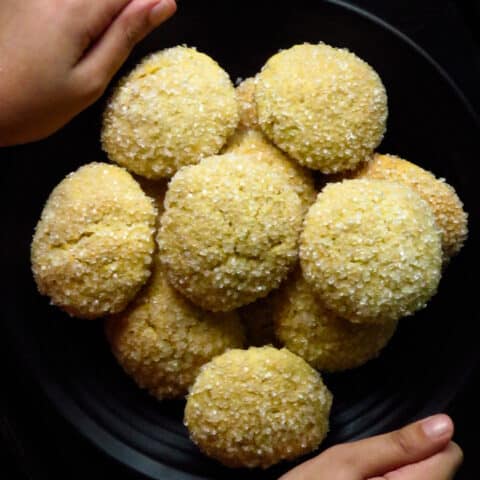
Sri Lankan Gnanakathai(Sugar-Dipped Rock Cookies)
Gnanakatha also known as rock cookies or sugar dipped cookies are a Sri Lankan biscuit variety.
These cookies are made with basic butter cookie ingredients and then coated in sugar before baking them.
Once baked, the cookies have a sugar crust and are crumbly in texture.
Ingredients
- 2 cups of flour
- 1/4 cup of butter
- 1/2 a cup of granulated sugar(substitute with icing sugar to combine easily)
- 3 teaspoons of baking powder
- 1 large egg
- 1/2 teaspoon vanilla
- 1/2 a cup of sugar(preferably large grains)
Instructions
- All ingredients should be at room temperature.
- Place butter (1/4 cup) in a bowl and run your spatula through the butter to soften it.
- Sift icing sugar(1/2 cup) onto the butter, breaking any lumps.
Add a whisked egg(1 large) and vanilla(1/2 tsp) to the mix and combine. - Add flour (2 cups) and baking powder (3tsp) to the flour and sift into the bowl of ingredients.
- Combine all ingredients to make a rough dough.
- Mix to combine, do not knead to make the butter cookie dough.
- Portion the butter cookie dough into dough balls placing them in a tray covered in baking paper(parchment paper).
- Lightly brush water on all the dough balls.
- Using your palm lightly flatten the rock cookies to look like discs.
- Take each cookie disc(gnanakatha), and place them on the sugar grains(1/2 cup).
- And gently press down so the sugar grains coat one side.
- Place them on a baking sheet while preheating the oven to 170C.
- Bake at 170C for 16-18 minutes.
- For reference purposes, I baked one batch for 16 minutes which gave me soft cookies while 18 minutes gave me slightly harder and darker gnanakatha cookies.
- In my opinion, both timings give excellent results depending on what type of texture you want the cookies to be.
- Let the gnanakatha(rock cookies) and enjoy them with your favourite cup of tea.
Recommended Products
As an Amazon Associate and member of other affiliate programs, I earn from qualifying purchases.
-
 Spring Chef Magnetic Measuring Spoons Set, Dual Sided, Stainless Steel, Fits in Spice Jars, Black, Set of 8
Spring Chef Magnetic Measuring Spoons Set, Dual Sided, Stainless Steel, Fits in Spice Jars, Black, Set of 8 -
 Hudson Essentials Stainless Steel Measuring Cups Set - 6 Piece Stackable Set with Spout
Hudson Essentials Stainless Steel Measuring Cups Set - 6 Piece Stackable Set with Spout -
 EZ Off Jar Opener - Under Cabinet Jar Lid & Bottle Opener - Opens Any Size Jar - Great for Arthritis - Perfect for Seniors & Weak Hands
EZ Off Jar Opener - Under Cabinet Jar Lid & Bottle Opener - Opens Any Size Jar - Great for Arthritis - Perfect for Seniors & Weak Hands -
 Nordic Ware Natural Aluminum Commercial Baker's Half Sheet, 2-Pack, Silver
Nordic Ware Natural Aluminum Commercial Baker's Half Sheet, 2-Pack, Silver -
 OXO Good Grips 11-Inch Balloon Whisk
OXO Good Grips 11-Inch Balloon Whisk -
 SHARDOR Hand Mixer Electric, Handheld Mixer With 2x6 Speed, Electric Mixer for Dough, Egg, Cake, 5 Stainless Steel Accessories, Snap on Storage Case
SHARDOR Hand Mixer Electric, Handheld Mixer With 2x6 Speed, Electric Mixer for Dough, Egg, Cake, 5 Stainless Steel Accessories, Snap on Storage Case -
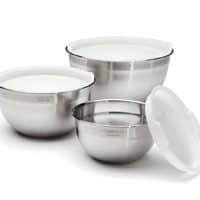 Cuisinart CTG-00-SMB Stainless Steel Mixing Bowls with Lids, Set of 3
Cuisinart CTG-00-SMB Stainless Steel Mixing Bowls with Lids, Set of 3 -
 Duralex LYS Mixing Bowl Set, 10 Piece, clear
Duralex LYS Mixing Bowl Set, 10 Piece, clear
Nutrition Information:
Yield: 15 Serving Size: 1Amount Per Serving: Calories: 145Total Fat: 4gSaturated Fat: 2gTrans Fat: 0gUnsaturated Fat: 1gCholesterol: 21mgSodium: 127mgCarbohydrates: 26gFiber: 0gSugar: 13gProtein: 2g
Nutrition facts are an estimate and not guaranteed to be accurate. Please see a registered dietitian for special diet advice.
Each recipe on this blog has been written with great care and love to the best of my ability with you in mind.
It’s free and on the blog, for you to try anytime.
All I ask is that you do not save it on any apps, recipe boxes, or online groups which will affect me as a food blogger and the growth of this blog.
I would appreciate it if you only shared the link rather than the full recipe.
All images and text on this website are protected by copyroght.